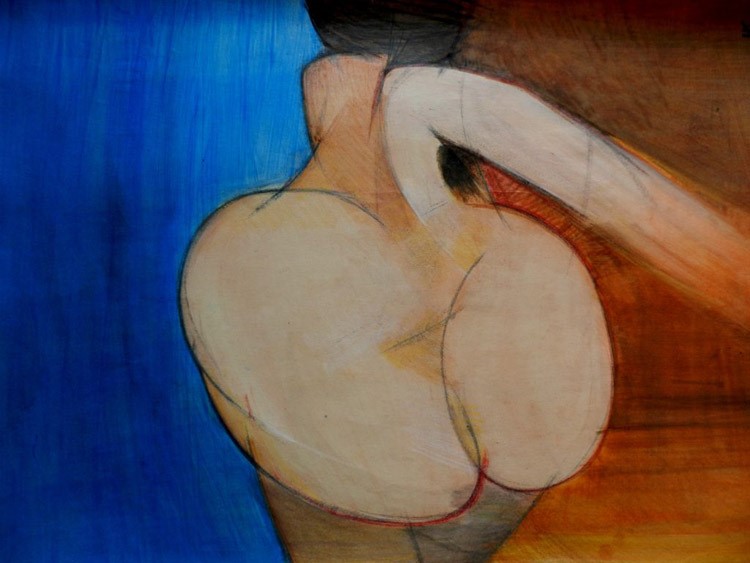
Inside Nicholas de Piro’s modern art collection: Hermon Shapiro
The first time I had laid my eyes on Nicholas de Piro’s modern art collection was about five years ago, when I had just started working at his 16th century Palazzo Casa Rocca Piccola. I remember he and his wife Frances had invited me to tea in their private quarters, whose walls, I will never forget, were jam-packed with modern drawings and paintings. “There are a few more you know!” Nicky had said to me while I sipped my tea and gazed at each and every one of them. “If you have a minute to spare”, he added, “they are stored in Casa’s other private rooms, I can take you there if you wish!” And in the blink of an eye, there I was, standing mesmerised in front of hundreds of other modern drawings, paintings, sketches, prints and photographs which, “for years and years”, Nicky explained, had been waiting for a day to be rediscovered!
Well… perhaps that day has finally come! The following discussion belongs to a series of other ‘discussions’ that Nicholas and I are currently working on in the hope of shedding some light on works and talents of various international and indeed local artists who form part of the collection – some of which we (including myself) still know little of.
In today’s discussion Nicholas will be introducing us to, and sharing some memories surrounding his Hermon Shapiro pictures and indeed the artist himself.

Eve Cocks [EC]: When was the first time you came across the works of the British artist Hermon Shapiro, and how did you manage to acquire your collection of his paintings and drawings?
Nicholas de Piro [NdeP]: Well, I got to know of Shapiro towards the end of my stay in England; I think it was about 1989. At the time I was running an Historic House Museum in Gloucestershire and dealing was a pocket-money hobby for me. I had seen a picture of his in somebody’s house, I don’t remember exactly whose house it was, but I do remember that I had found his work appealing – so I did all I could to discover his address. It was not an easy task, as art-dealers tend to hide their sources. Finally, I found out that Shapiro was living in Wales – if I remember correctly, his address was close to another British artist whom I knew who had been in Malta during World War II whose name was Thomas Rathmell. So, I paid him a visit and I was more than a little impressed by the variety and yet constant disciplines of his work. His studio known only to a very few dealers was truly a revelation.
EC: So you actually met him?
NdeP: I did indeed! He received me, perhaps suspicious, but kindly. He gave me the feeling that he had not been selling much to the couple of dealers who were handling his work at the time. The banks were being unsympathetic and the market for lesser-known talent was approaching a slump. I was, in fact, in a lucky position. I remember him asking me: “Which ones do you like?” and I said: “I like them all!” I sounded like a South American tycoon or something similar perhaps! And then he replied: “Well, shall we put some bits together?” I replied: “What do you want for all of them?” At first he thought that I was joking, but after I made him an offer he asked me: “Can I keep a few?” I said: “Yes, but I must choose what I want”. At the end we came to a very happy conclusion. A few weeks after I visited Shapiro, I decided that I would return to Malta with my family. My Shapiros had been stored away for quite some time before I sold some to decorate the offices of stockbrokers Rizzo, Farrugia & Co. in Sliema – where a number of clients also interested in the arts pass through, as well as members of the business community. I have given one or two as wedding presents and also some more to my children, godchildren and recently to a grandchild as a coming-of-age present.
EC: How many did you sell/give away roughly?
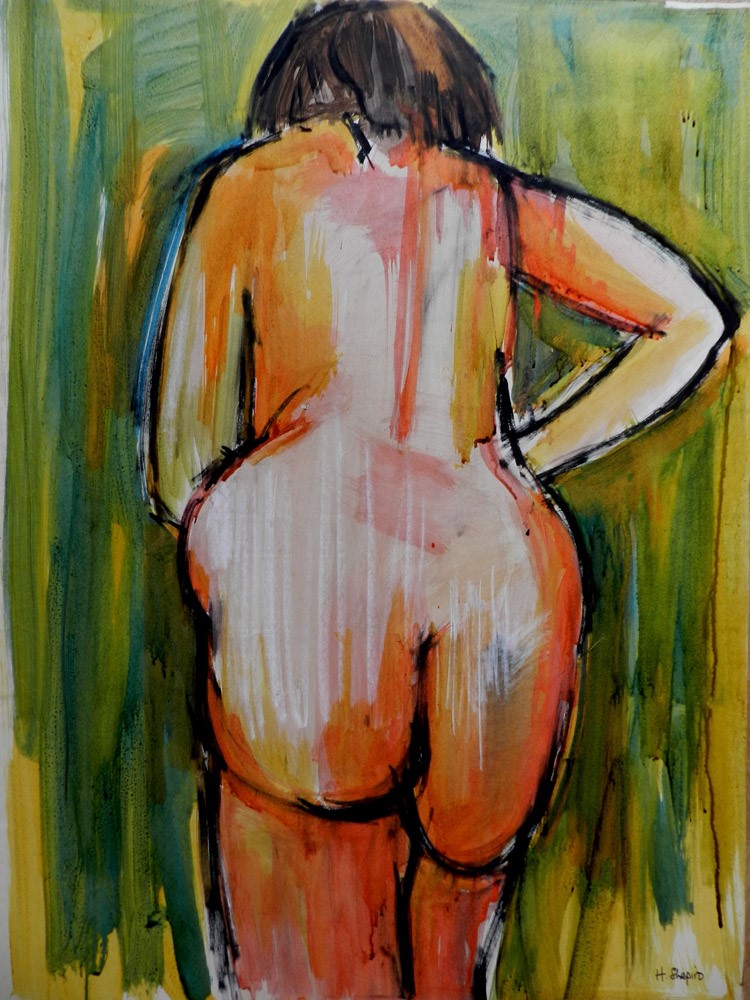
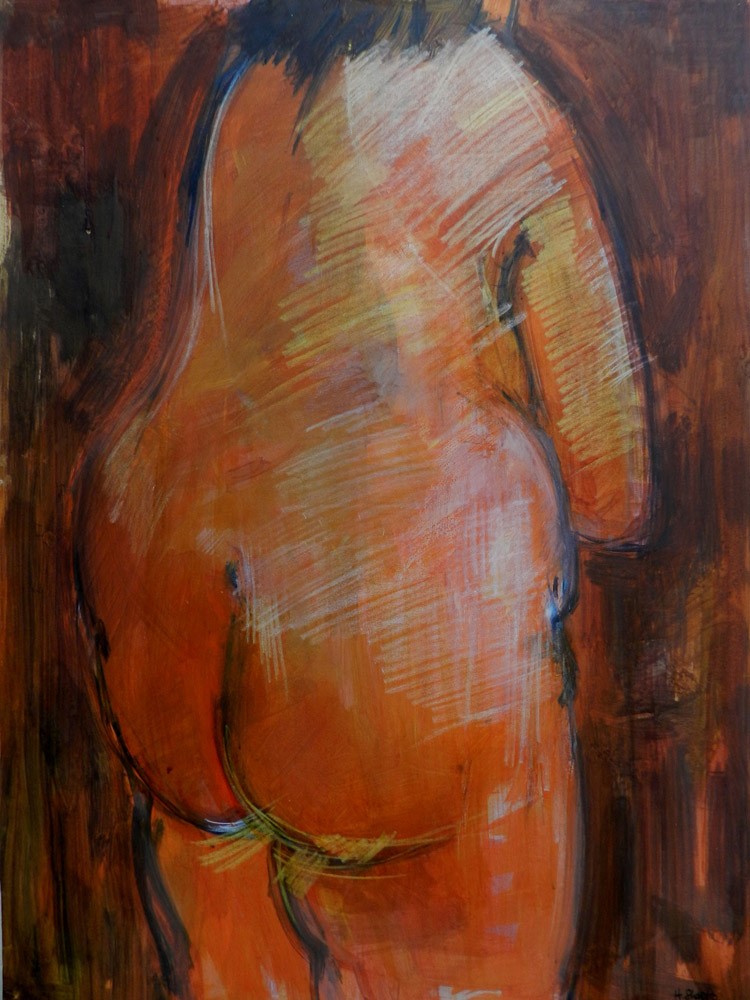
NdeP: I actually feel a little sorry to have parted with about twenty items – I liked them all; however, the collection is not extinguished! I do not know exactly how many are left, but last time I counted there were about fifty.
EC: And the ones that you had sold etc., are they similar to the ones that still form part of your collection, thus: abstract and stylised female nude paintings?
NdeP: Yes, with about five or six exceptions where the artist is trying something else. As you can see, my current collection has a peppering of almost traditional figurative and landscape drawings, sketches…. I also own a sort of triptych, it’s a largish oil on board, which is a truly noteworthy work of his, in fact he was not so keen to sell it and I remember saying to him: “Come on, I want to have that!” and he fortunately played along.
EC: What does this work depict?
NdeP: It’s a woman in her underwear, posing in three different positions (picture below).
EC: Ohh… I remember it being hung in your previous office; it’s a pretty good work!
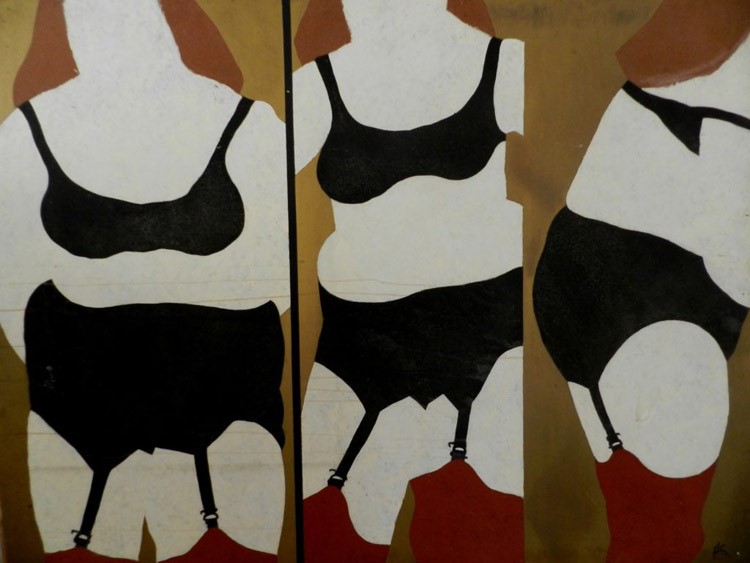
NdeP: It did upset one or two people you know, including some members my family, one aunt actually told me that she wouldn’t come to see me again if I didn’t take it down.
EC: He he… So the only time you met Shapiro was in Wales?
NdeP: Yes, I only met him on that day and we got on very well. We spoke again once or twice on the telephone, I think I had got in touch with him to ask some questions about…oh dear, I can’t remember exactly what but, I did speak to him again, but after that, I came to Malta and we completely lost contact. He was very friendly and I don’t know what he is doing now or where he is.
EC: I did some online research and I regretfully found out that he passed away last year, July 2016.
NdeP: Oh dear, I am so sorry to hear.
EC: Before you said that Shapiro was a friendly man, I was wondering whether you can share with us a few more thoughts about the artist’s character, works, style, technique…
NdeP: Well, he was a gentle-looking character, you wouldn’t think that he would be the type of person to paint nudes when you meet him. I am truly surprised by the strength of his work and like you, I feel it is impressive! If your eye is trained you can easy see that he is a valid artist and not a waste of time. He’s not fooling about or pretending to be an abstract artist when he’s not even that. He is proficient. It does help to appreciate his looser compositions once you have seen his more realistic drawings – as they testify that he can do what is technically good, and I think that every artist, to be an artist, has to produce quality. One cannot just splash on paint and declare that I’m an artist! There are some around who do just that!
EC: I totally agree! In fact, what I really liked about Shapiro’s work is his ability to capture the essence of the body – whether it’s stylised or not – through simple line drawing. For me this shows that he truly knows his stuff or what I call “his language”. I strongly believe that every artist, before claiming themselves to be one, should know their language inside out – or at least should know the basic elements that constitute the art of drawing, painting etc. – so evident, for example, in the output of the Austrian artist Egon Schiele and many other great artists. Many contemporary artists opt for the abstract because “it’s an easy way to create art” and unfortunately, what they do not realise is that, their lack of technical skill is actually being transmitted – whether they are painting or drawing in the abstract or even in a would-be stylised manner.
NdeP: I find Shapiro’s abstracts difficult to criticise. Some people are possibly concerned about how the postures of the nudes are – these pictures grow on you, and when you get over your prejudices you might start to appreciate them for their quality!
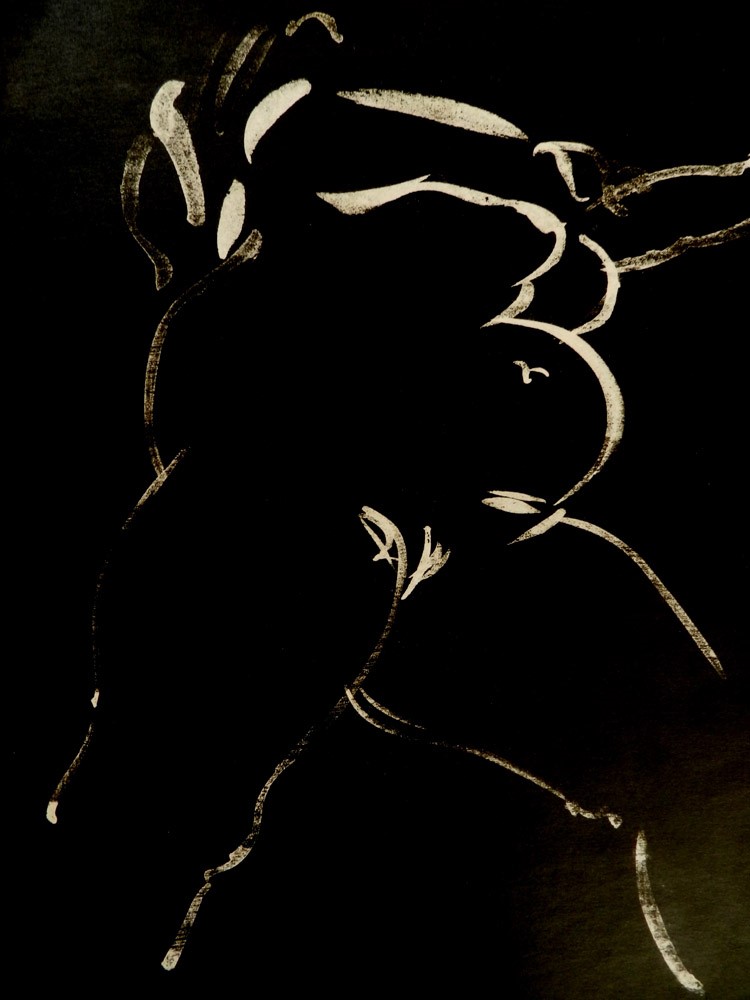
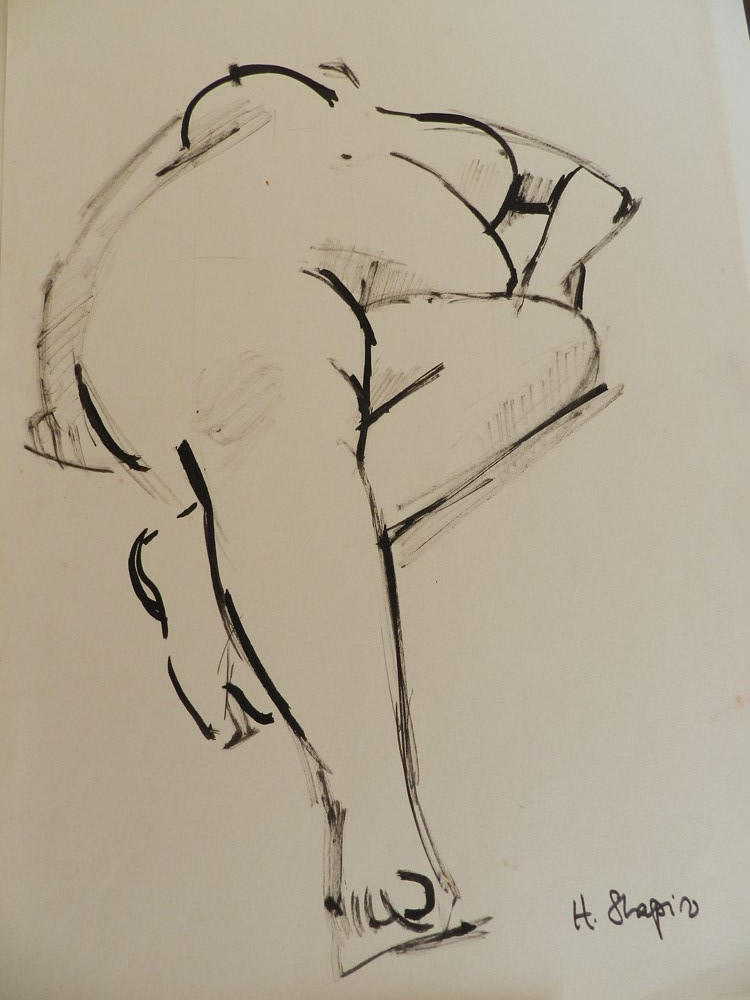
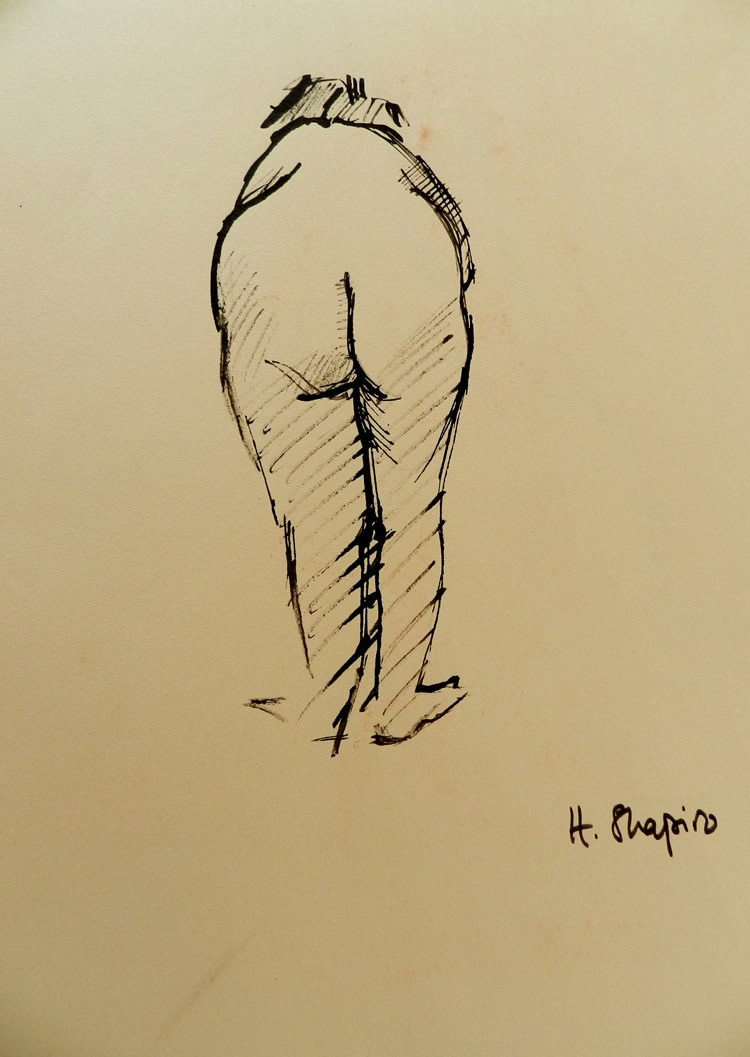
EC: Do you know if Shapiro ever visited Malta?
NdeP: I don’t think so, but we could find out.
EC: As an artist Shapiro seems to be fascinated by the female figure?
NdeP: Well, most artists funnily enough are very fascinated by the female figure, one or two who are not are in a minority. The beauty of the female figure is what mainly appeals to men and women artists, so I think that must be the reason, it is inspiring, it is fascination, excitement and comfort!
EC: True.
NdeP: So the beauty of the female form simply inspires Shapiro to produce something wonderful. Now this man obviously very much wants to be inspired, I think! And I also feel that he is being very dramatic in his declaration of how important the female figure is to him, it’s not always the “perfect” female figure, he does quite apparently favour plump women.
EC: I also noticed that, at times, he adds a touch of fun to his works.
NdeP: He does at times but, I do not believe he is trying to be funny. I think he is trying to discover more about himself through his work.
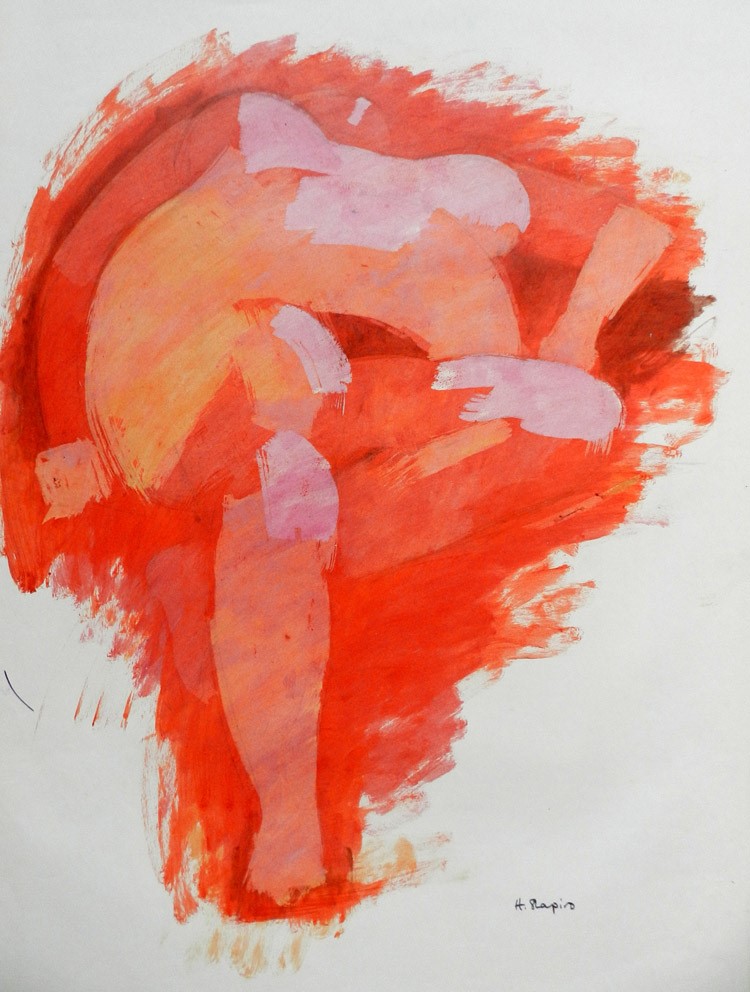

EC: The only biographical note that I managed to find online – published on the Hatfield Hines Gallery website – mentions that he used to attend the Camberwell College of Arts , which as you know is a renowned art school where artists including Victor Pasmore used to teach. In this bio there is a mention that he was taught and influenced by the artist Martin Bloch as well as other artists who taught at the Camberwell before Shapiro enrolled in 1949. These include Keith Vaughan and John Milton. Did he ever speak to you about these influences, his attendance at the Camberwell or any other influences in general?
NdeP: The truth is that I cannot remember, I was very excited and anxious to acquire his work. But I do not think he totally shared his inner feelings or his tastes with me. I mean, I rather naïvely visited his home and just chatted with him for some time.
EC: Then, if I had to ask you, who do you think he was influenced by?
NdeP: This is the problem; so many artists are influenced by different people for different reasons.
EC: Some of his strange, contorted-looking female figures reminded me of Picasso’s reclining nudes.
NdeP: Maybe if Picasso had never existed, Hermon Shapiro would not have known how to express himself the way he did, so from that point of view, yes, Picasso probably allowed him to be more daring and perhaps more oblivious sometimes of reality. Emmanuel Levy’s nudes might well be something our artist encountered. I think Shapiro was sophisticated – so I am convinced that education wise he knew a great deal. There is nothing naïve about this artist.
EC: So, do you think his level of sophistication derived from his attendance at the Camberwell?
NdeP: Yes, I think so. You see, some artists try their best to be all sorts of things and then one tends to say, “Hmmm they’re a bit naïve.” But there is nothing remotely naïve about this man, he is clearly and totally sophisticated. He is very honest in a way to himself, and he is painting what he wants, perhaps more than what his clients might wish him to do. I have not encountered any ‘delightful’ portraits which he might have been trying to sell.
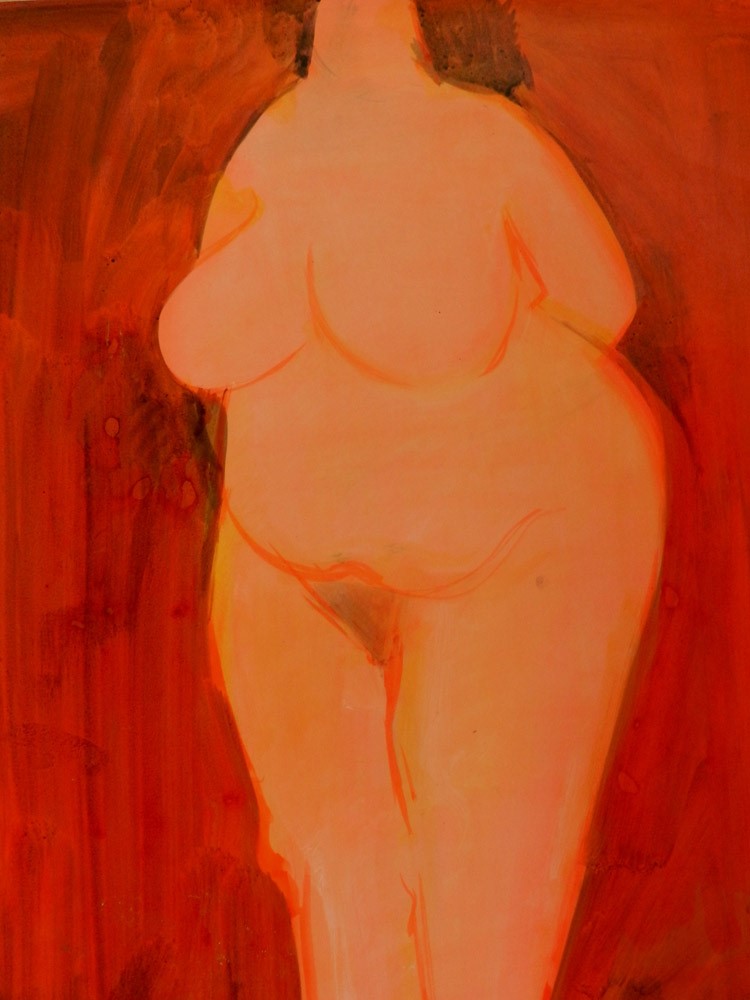
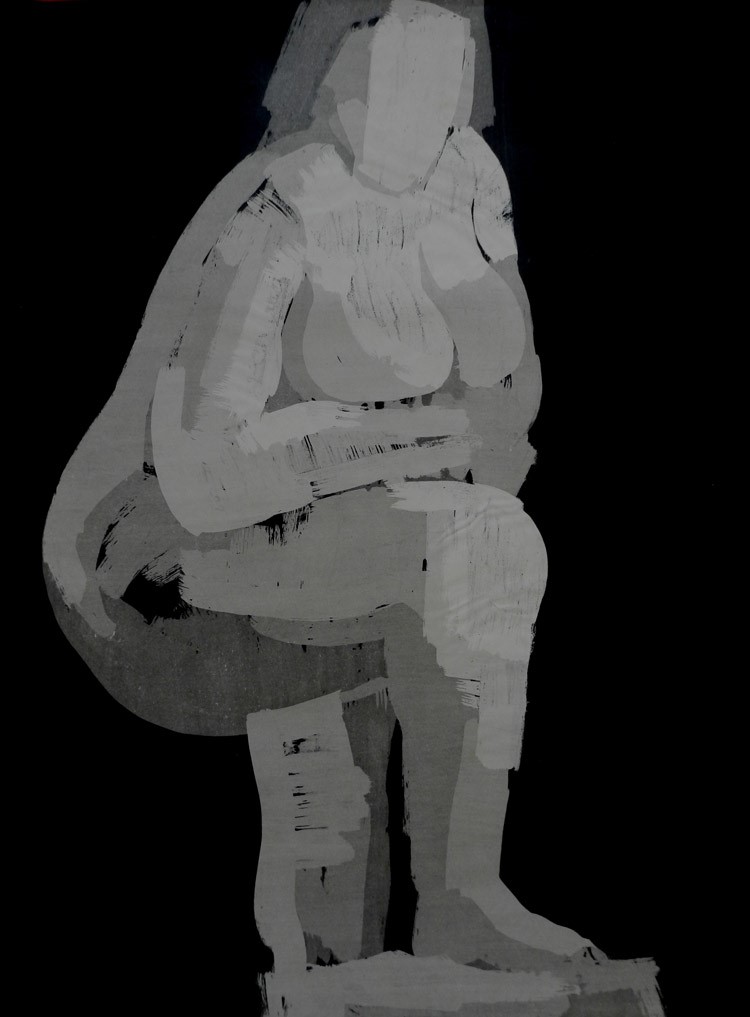
EC: I noticed that most of his works are in watercolour. Generally artists tend to favour oils or acrylics when painting bold, large areas of flat colour.
NdeP: You have a point, as his watercolours are mostly sizeable; in fact they are painted on large paper surfaces. I mean, there was a person I was reading about recently who used to work only in pastel, and no one could understand why he was only doing pastel and not anything else. Only the artist can answer this question. You also have to take into consideration that the works that I have shown you today all came out of his studio, so some might have been studies and experiments and not only the actual works that he might want to exhibit in galleries.
EC: You also have a few black and white nude and landscape sketches. Are they also watercolours?
NdeP: I think some are in watercolour and some in charcoal. Before I forgot to mention that, at times he did like mixing chalk pastels with his watercolours.
EC: His works are signed but not dated.
NdeP: I don’t know the date of each and one of them. I bought them all in 1989, so they can’t be later than that.
EC: Being such a good artist I can’t understand why there isn’t much information about him online. His works do come up as being sold at auction houses and galleries, but that’s all.
NdeP: Well, it happens. I mean, there are a lot of good artists whom we know little about or are recognised very late in life, or even posthumously. There are so many Italian artists of the Renaissance, for example, whose names we do not even know.
EC: I really think that Shapiro would be a good topic for art history students to research!
NdeP: I think there is every reason to believe that it could be quite an adventure to get into his mind. His works say a lot about him. So yes, he needs to be tracked down further!
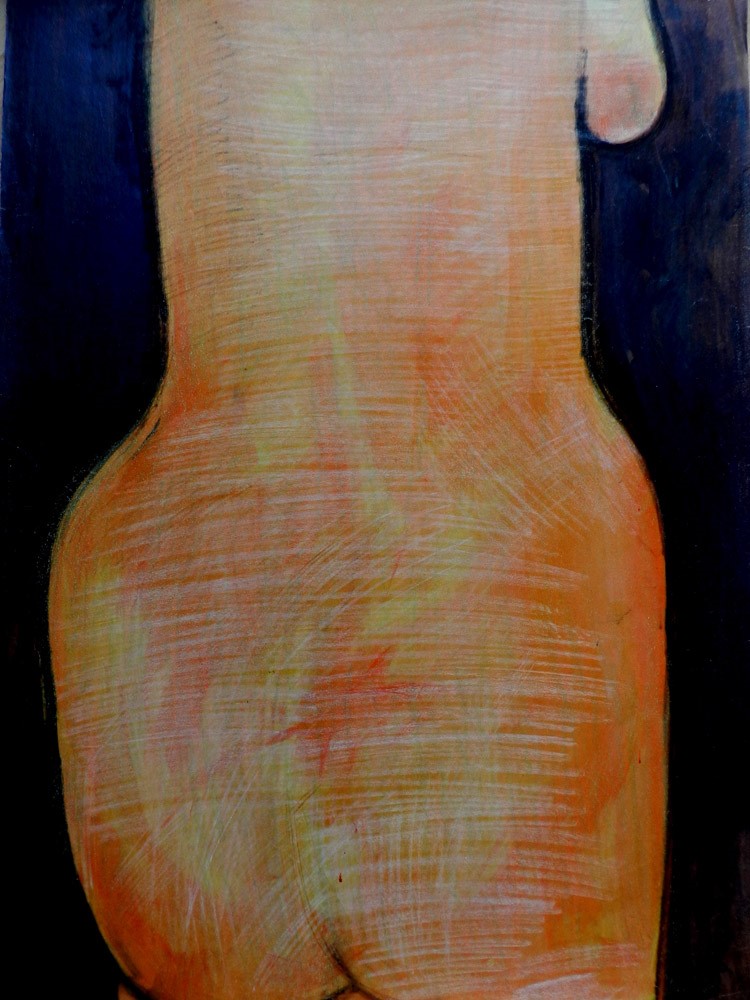
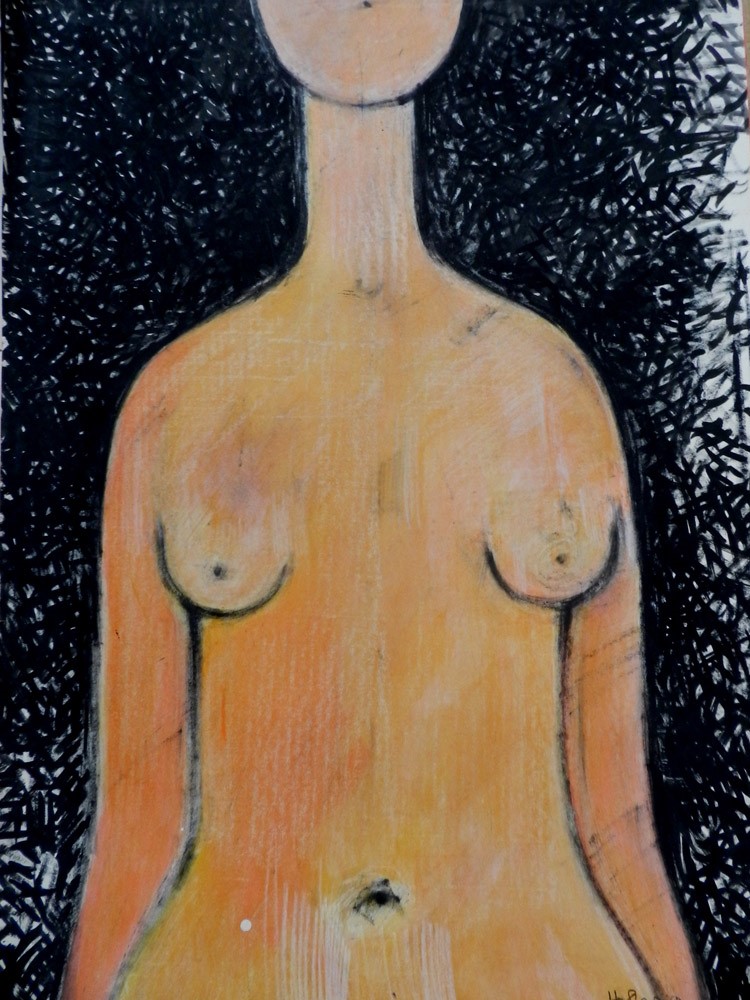
PHOTO CREDITS: Eve Cocks
